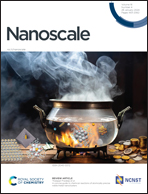Nanocarbon-based sensors for the structural health monitoring of smart biocomposites
Abstract
Structural health monitoring (SHM) is a critical aspect of ensuring the safety and durability of smart biocomposite materials used as multifunctional materials. Smart biocomposites are composed of renewable or biodegradable materials and have emerged as eco-friendly alternatives of traditional non-biodegradable glass fiber-based composite materials. Although biocomposites exhibit fascinating properties and many desirable traits, real-time and early stage SHM is the most challenging issue to enable their long-term use. Smart biocomposites are integrated with sensors for in situ identification of the progress of damage and composite failure. The sensitivity of such smart biocomposites is a key functionality, which can be tuned by the introduction of an appropriate filler. In particular, nanocarbons hold promising potential to be incorporated in SHM applications of biocomposites. This review focused on the potential applications of nanocarbons in SHM of biocomposites. The aspects related to fabrication techniques and working mechanism of sensors are comprehensively discussed. Furthermore, their unique mechanical and electrical properties and sustainable nature ensure seamless integration into biocomposites, allowing for real-time monitoring without compromising the material's properties. These sensors offer multi-parameter sensing capabilities, such as strain, pressure, humidity, temperature, and chemical exposure, allowing a comprehensive assessment of biocomposite health. Additionally, their durability and longevity in harsh conditions, along with wireless connectivity options, provide cost-effective and sustainable SHM solutions. As research in this field advances, ongoing efforts seek to enhance the sensitivity and selectivity of these sensors, optimizing their performance for real-world applications. This review highlights the significant advances, ongoing efforts to enhance the sensitivity and selectivity, and performance optimization of nanocarbon-based sensors along with their working mechanism in the field of SHM for smart biocomposites. The key challenges and future research perspectives facing the conversion of nanocarbons to smart biocomposites are also displayed.

- This article is part of the themed collections: Recent Review Articles, Celebrating International Women’s day 2024: Women in Nanoscience and Sustainable Composites


 Please wait while we load your content...
Please wait while we load your content...